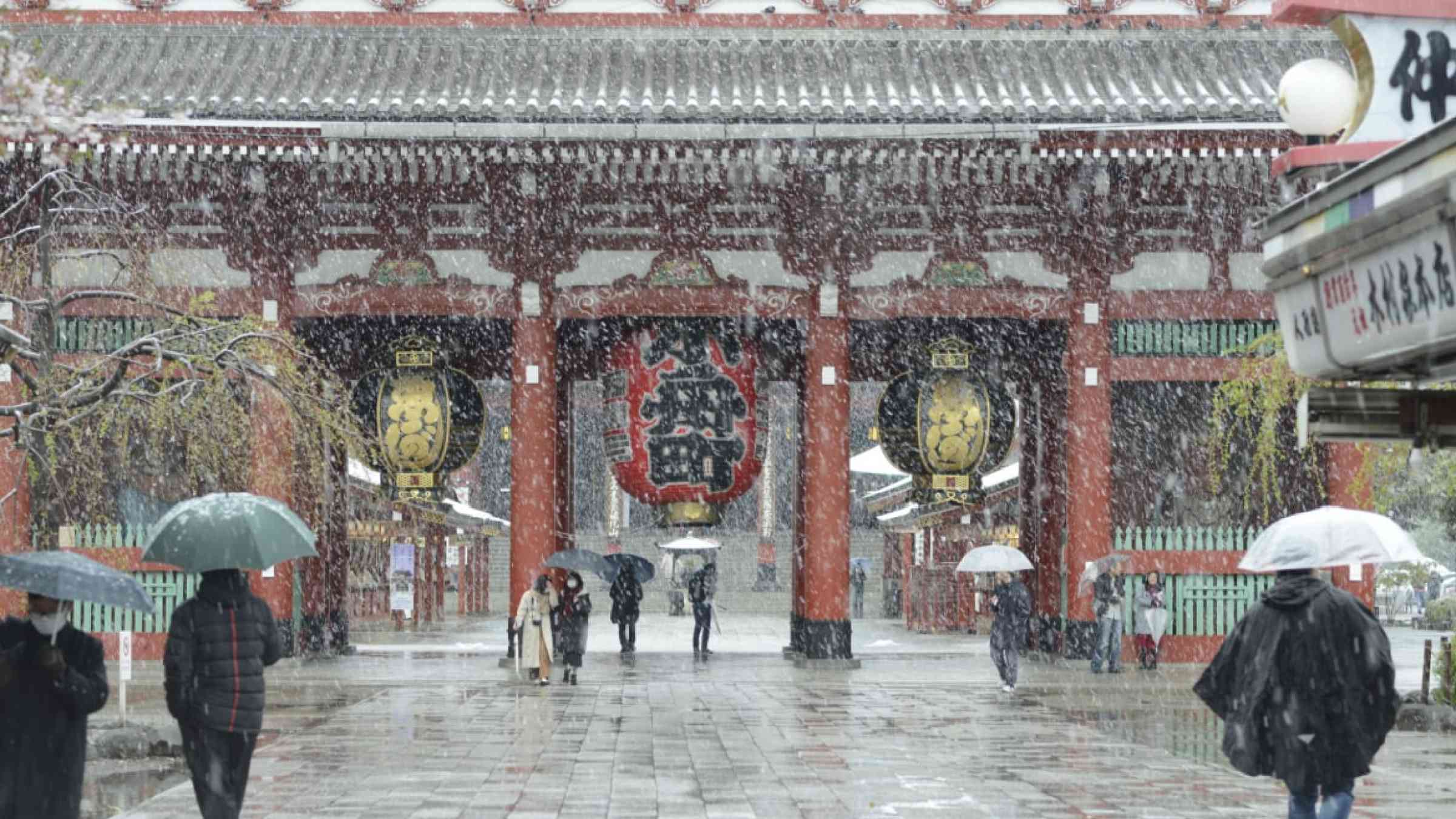
The country is set to experience more frequent and heavier snowstorms, and as the death toll rises, it becomes clear that its snow adaptation tactics must change.
A woman in her 70s was buried under a pile of thick snow in December, as heavy snowfall hit northern Japan, killing over a dozen people that month. The deadly snow also injured over 90 people and knocked down a power transmission tower, leaving 20,000 homes without electricity.
This year's power cut is proving to be particularly tough for Japan, which is grappling with an energy crunch due to the Ukraine war while the demand for heating and electricity amid heavy snowfall was expected to spike.
This comes after some parts of northeastern Japan recorded three times more snowfall than average. A Japanese climate expert attributes this unusually heavy snowfall to human-caused climate change.
"Cold air outbreaks sometimes bring heavy snowfall over the coastal areas along the Japan Sea, especially in mountainous areas," Dr Hiroaki Kawase, a senior researcher at Japan’s Meterological Research Institute, told FairPlanet.
The snowfall might have become uneven, as Nagaoka city in the Niigata area, Otaru and Sapporo in Hokkaido are suffering heavy snowfall this year - a rare occurrence.
"These cities sometimes experience heavy snowfall, but not often," Dr Kawase said. On the other hand, he pointed out, cities near mountainous areas did not record snowfall as heavy as they did last year.
Japan to face more heavy snowfall
Heavy snowfall is projected by the government to occur more frequently in inland areas of Honshu Island and Hokkaido Island - estimates that correspond with Dr Kawase’s findings.
"Our computer simulations indicated that historical global warming, especially historical warming of Japan Sera, enhances the heavy snowfall in these areas because the evaporation becomes larger and cumulus convection develops more than those in the pre-industrial level."
Abrupt heavy snowfall has emerged as a new problem for Japan. Just a year ago, the country had faced similar incidents in its northern region, with some areas like Fujiwara, Gunma and Nagasaki recording the highest maximum snowfall.
Even areas in Kyushu and Shikoku which typically receive scarce snowfall were no exception. The winter fatalities number up to the end of April 2021 stood at 110.
Dr Masaki Nemoto, a researcher at Japan’s Snow and Ice Research Center, told FairPlanet that sudden snowfall can make it difficult for the authorities to respond in a timely manner.
"It is not easy to cope with heavy snowfalls that accumulate nearly a metre in a single day," Dr Nemoto explained. "Heavy snow disasters have the potential to become more sudden and severe than ever before."
Adaptation measures
So far, Japan has deployed several adaptation measures against sudden heavy snowfall, on top of improving its disaster response.
Such measures include setting up a snow removal system that utilises different types of equipment, building snow fences on highways and launching a heavy snowfall warning system, Dr Nemoto of Japan’s Snow and Ice Research Center said.
Furthermore, new methods have been developed in recent years to melt snow faster, including solar-powered road heating systems that circulate hot water and street sprinklers that spray warm groundwater.
The government also recommended installing a backup power source to prevent power cuts during heavy snowfall. Since slope failures were projected to increase due to rapid snowmelt, officials have also been looking into methods to improve slope stability.
Many fatalities and injuries took place when people tried to remove snow from their roofs. In this regard, Dr Nemoto suggested redesigning houses in a way that does not require human involvement in snow clearing. Snow removal robots have already been deployed on some streets in the country, and now calls are growing to develop automated bots to assist elderly people with clearing snow from their roofs.
Scientific advance is necessary
But Dr Nemoto stressed that expanding scientific research on the matter is equally as important.
"In order to prevent severe man-made disasters, it is important not only to rely on such structural measures, but also to take non-structural measures using advanced information, such as forecast information to restrict movement in dangerous snow-damaged areas and secure safe routes."
Studying the changing trends of snowstorms has been one of the recommended national climate adaptation measures in Japan, as the nation recorded an "extremely rapid increase in heavy snowfall in recent years." Officials also recommended conducting research related to the impacts of heavy snowfall and avalanches.
"It is important to improve the sophistication of forecasting and observation information," Dr Nemoto added. "It is also important to establish new disaster response methods that can fully utilise scientific knowledge in actual disaster response, and to improve the efficiency and standardisation of disaster response methods."
Converting snow into power?
After stirring controversy by revisiting its plan to use nuclear energy following the 2011 Fukushima nuclear disaster, Japan has been scrambling to transition to renewable energy.
Nikkei Asia reported that a local startup, in collaboration with university experts, started experimenting with converting snow into energy since December last year in a snowy city named Aomori.
The design aims to generate power by leveraging the temperature difference between snow and the outside air; it does so through heat transfer tubes in the snow to source cold air. The experts told Nikkei Asia that snow power has less environmental impact than other forms of renewable energy.
It remains to be seen how such technology can help generate green energy for Japan, and if it can be a source of emergency power amid snowstorm-induced power cuts.